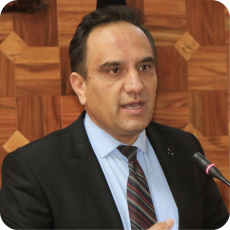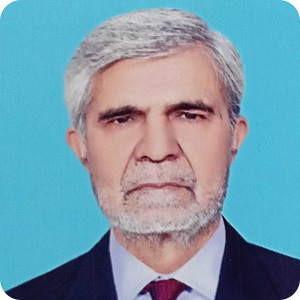Thanks to immunization, people nowadays live longer, are able to fight deadly diseases, and can receive treatment for various once-fatal illnesses. However, despite all the efforts to raise vaccination rates worldwide, the number of children who did not receive any vaccines has increased by almost 10% in just three years, reaching 20.5 million in 2022. To address this situation, public health experts promote education, clear communication, and community engagement to build confidence in vaccination programs. In today’s article, we asked some experts to provide their opinions about the cause of the decrease rates for vaccinations and make some predictions for the future. Check their insights below.
Key Takeaways:
- World Immunization Week is marked every year in the last week of April. In 2024, the event will celebrate the 50th anniversary of the Expanded Programme on Immunization (EPI).
- In 2019, the global vaccination coverage was at 86% but by 2021, this had declined to 81%, reaching its lowest point since 2008.
- Vaccine hesitancy, limited access to healthcare, adverse effects of vaccinations, and cultural or religious beliefs have contributed to the decreased rate of vaccination.
- According to experts, advances in genetic and mRNA technologies offer promise for developing vaccines against HIV, malaria, tuberculosis, and emerging infectious threats.
DevelopmentAid: Why are so many children still unvaccinated today?

“The millions of children who are unvaccinated or under-vaccinated is a consequence of the COVID-19 pandemic which disrupted the provision of services to populations including routine immunization for children. The health systems in low- and middle-income countries that were already struggling to provide sufficient service coverage to the population have been further fragilized with the shifting of resources for health towards responding to the emergency. It is important to remember that health facilities were being avoided because of the fear of infection and that the overall context of the pandemic also made it difficult for families to travel to health centers to seek services or for the health workers to serve the population through outreach activities (home visits, rally-posts, fixed points). The immunization status for the cohort of children born from 2019 through 2021 has been deeply impacted because of the pandemic, especially in low and middle-income countries. In some countries, the recovery from the pandemic has been slowed down by internal conflicts, with territories controlled by armed groups exercising violence and provoking population displacement which makes it difficult to access/provide health services.”

“The plight of unvaccinated children is rooted in a complex web of systemic, societal, and economic challenges that is most pronounced in regions where resources are scarce. The backbone of any immunization effort, the healthcare infrastructure, often falls short in low- and middle-income countries due to inadequate facilities, inconsistent vaccine supplies, and a dearth of healthcare professionals. The situation is further aggravated by geopolitical turmoil and conflicts that severely hamper vaccine delivery efforts to those in war-affected and remote locations. Economic disparities and educational voids compound these issues, leaving the underprivileged disproportionately affected. Moreover, vaccine hesitancy, fuelled by misinformation and a deep-seated distrust in the healthcare system, poses a tremendous barrier, deterring many parents from embracing vaccines for their children. Addressing these multifaceted challenges demands a concerted, comprehensive strategy to ensure every child, irrespective of their geographic or socio-economic status, receives the vaccines they critically need.”

“Health inequities, especially when it comes to access to vaccines, remain one of the biggest challenges when it comes to the successful prevention of vaccine-preventable diseases. Not all countries around the world have implemented a systematic approach to vaccination due to different reasons which may vary from the economic development of the country, the development of the health system and health infrastructure, cultural reasons, and so on. However, there is no single algorithm that can be used around the world. This issue needs to be managed in accordance with the specifics of the community and they must be taken into consideration when dealing with this issue, providing that the vaccines would be available for every child.”

“Children may remain unvaccinated for various reasons such as inadequate access to healthcare services, missed opportunities, the adverse effects of vaccination, a lack of knowledge about vaccination programmes and vaccine benefits, vaccine hesitancy, cultural beliefs, and parents’ misconceptions. In addition, some parents may be concerned about vaccine safety, while others may believe that their children are not at risk of vaccine-preventable diseases. Religious exemptions may also affect immunization rates.”

“Numerous children continue to be unvaccinated, primarily in developing countries, where a confluence of factors exacerbates the problem. Among these, key contributors are the absence of political commitment, lack of strong dedication, absence of proper stewardship, mismanagement, dishonest practices, a low literacy rate, the overburdening of vaccinators, and the unsustainability of vaccination plans. The allocation of target populations to vaccinators is often impractical. For instance, each Union Council (the smallest unit in the district) is assigned to only a Vaccinator covering a vast population and large geographical area nonetheless, creating challenges in coverage. Budget constraints and administrative issues lead to unfilled vaccinator positions, and logistical support, affecting the transportation of the vaccinations. In remote or economically disadvantaged areas, limited access to healthcare facilities, including vaccination services, worsens the issue. Community health workers, crucial for support, face limitations in coverage, reaching only fifty percent (50%) of the population. Low literacy rates among parents contribute to a lack of awareness about concerns and the importance of vaccine safety, misinformation about vaccines and distrust of healthcare authorities contribute to their reluctance. Religious and philosophical beliefs, sometimes amplified by social media, also cause vaccine hesitancy. Weak healthcare infrastructure and systems, marked by insufficient resources, staff, training, and monitoring, hinder the effective delivery of vaccination programs. Conflict or humanitarian crises in certain regions disrupt or make vaccination programs unavailable, and inadequate vaccination administration leaves children vulnerable to preventable diseases.”

“As a health officer/health department director in the 1990s, I worked to understand the barriers as our county completion by age 3 rate was below 60%. Then, we found that service delivery issues (location), scheduling, and non-user-friendly procedures particularly for working mothers affected the utilization of immunization services. This we could address with more locations, evening hours, streamlined paperwork, more attention by nurses to the fears and the need for information about the vaccines and how to treat side effects such as fever. Lack of provider choice was also an issue – in Kansas, we worked to develop stronger public health/physician office partnerships. A strong religious community claimed that immunizations were against their religion. This too could be and was addressed by religious leaders.”

“The high number of unvaccinated children in 2022 can be attributed to many reasons. However, not all countries are concerned with all the reasons, as some nations focus on specific issues. Among the reasons, we have:
- The disruption of the health system caused by the COVID-19 pandemic, and many countries are still struggling to recover.
- Hard-to-reach communities bear the most significant numbers of zero-dose children and under-vaccinated children. These hard-to-reach communities are found in the following places:
- Settlements far from health facilities where vaccination services are available, and reaching these communities mostly incurs high costs.
- Urban poor individuals who mostly exclude themselves from the health system and do not visit health facilities. Typically, they are not assisted by health workers who fail to develop any strategy to instill confidence in the health system.
- Mobile communities such as nomads, fishermen, etc. The health system in many countries struggles to find and apply the correct strategies to reach these communities. Establishing a reliable system to reach mobile communities is particularly challenging for some countries.”
DevelopmentAid: Did the COVID-19 pandemic conspiracy theories create vaccination hesitancy worldwide?

“Vaccine hesitancy has existed for decades and constitutes a continued threat to public health. The COVID-19 pandemic has fueled conspiracy theories which were rapidly spread among large audiences worldwide by the means available nowadays such as the internet and social media platforms. The conspiracy theories weighed significantly because political leaders also willingly aligned with them. This contributed to building mistrust toward the healthcare and scientific community. Also, partly due to conspiracy theories, some categories may have developed a lack of confidence in the efforts and motivation to control the pandemic, including distrust in the efficacy and safety of the COVID-19 vaccines. The “infodemic”, as it was called by the World Health Organization, was on a global scale because of the means of communications available which allowed the sharing of information to large audiences in the shortest time. Studies have established that those who believe in conspiracy theories are likely to become hesitant or even have a negative attitude towards vaccines and this may not be limited to the COVID vaccine alone.”

“The COVID-19 pandemic became a fertile ground for conspiracy theories which have notably eroded confidence in vaccination on a global scale. These unfounded narratives have sown seeds of doubt and fear, extending their shadow beyond COVID-19 vaccines to encompass routine immunizations. The rapid proliferation of misinformation through digital channels has significantly contributed to this trend, undermining the credibility of health authorities and the veracity of scientific evidence. This widespread skepticism not only hinders pandemic containment efforts but also poses a grave threat to the integrity of established immunization programs. Combating this wave of misinformation and restoring faith in scientific guidance and vaccines is imperative for public health authorities worldwide.”

“The global impact of COVID-19 has been accompanied by a surge in conspiracy theories and misinformation, contributing to vaccination hesitancy worldwide. These narratives, disseminated through social media and other platforms, include a range of false claims, from altering DNA to implanting tracking devices through vaccines. Such misinformation fosters fear and skepticism, influencing individuals and causing reluctance. However, vaccine hesitancy is a multifaceted issue influenced by historical distrust, cultural beliefs, healthcare access, and information source credibility. In some regions, concerns were raised about routine vaccinations, like Diphtheria, Pertussis, and Tetanus (DPT), coinciding with COVID-19 vaccination efforts. The incorporation of DPT as a booster dose at eighteen (18) months sparked doubts about its potential impact on routine vaccinations attributing it to COVID-19 vaccination.”
DevelopmentAid: What are the main consequences of an immunization rate decrease?

“A downturn in immunization rates carries dire repercussions for both individual and communal health. It precipitates the resurgence of preventable diseases, escalating illness and death rates, particularly among the most vulnerable segments such as children and the elderly. Such outbreaks exert undue pressure on healthcare systems, diverting essential resources from other critical services, and inflicting substantial economic burdens due to increased healthcare expenditure and diminished productivity. The deterioration of herd immunity, a critical defense for those ineligible for vaccination, increases the risk of epidemics. Moreover, the decline threatens to reverse the strides made in diminishing child mortality rates and controlling infectious diseases over the decades, thereby widening health disparities, and undermining societal well-being.”

“Before vaccines and before antibiotics, people lived much shorter lives. Infant morbidity levels were high, and the consequences of some diseases were not as rare as today. Today, the Euro region is considered a polio-free zone, but is that a set-in stone? Vaccines contribute to global immunity (sometimes referred to as herd immunity) and to keep it this way, the rate of immunization must be kept high. It is as simple as that. That is the way vaccines work. By decreasing the rate of immunization, the so-called “forgotten” diseases, or those that have been eradicated, will come knocking on our door. As we see pertussis outbreaks today, something that should be in our past, it will not be long before other vaccine-preventable diseases will return.”

“A decline in immunization rates has profound consequences at individual, community, and global levels. Maintaining high immunization rates is vital for overall community health. Lower rates diminish herd immunity, facilitating the spread of infectious diseases resulting in outbreaks of diseases, and leading to increased mortality, particularly for vaccine-preventable illnesses. Previously controlled or almost eradicated diseases have resurged with declining immunization rates, causing a heightened disease burden, particularly for measles, mumps, rubella, pertussis, and others. On account of increased illness-related absenteeism a country’s development is slowed down. Individuals unable to receive vaccines due to medical reasons depend on herd immunity, and any decrease in immunization rates jeopardizes their safety. This vulnerable population faces an elevated risk of severe consequences from preventable diseases. Outbreaks strain healthcare systems causing increased hospitalizations, medical visits, and resource demands. Economic consequences arise from increased healthcare costs, productivity losses, and potential long-term disabilities resulting from serious cases. Global interconnectedness aggravates the spread of diseases across borders. A decline in immunization rates in one region leads to the global dissemination of infectious diseases, challenging global health security. Furthermore, declining immunization rates undermine public trust in vaccination programs and public health measures. Fueled by misinformation, this mistrust perpetuates hesitancy, creating a challenging cycle to break.”
DevelopmentAid: What should the international community do to continue increase immunization rates, especially in developing countries?

“To boost immunization rates in developing nations, the international community must adopt a comprehensive strategy that tackles both the logistical hurdles and the barriers to vaccine acceptance. Strengthening healthcare infrastructures, including improving vaccine storage and distribution capacities, is crucial to ensure that vaccines are accessible even in the most isolated areas. Financial and technical support from global partners is essential to underpin these efforts, enabling the acquisition of vaccines and the strengthening of local healthcare frameworks. Equally important is the need to engage with communities directly, fostering trust in vaccines and dispelling myths through targeted education and advocacy initiatives, leveraging the influence of local leaders. Innovative vaccine delivery methods, such as drone technology and mobile clinics, can bridge the gap in hard-to-reach areas. These efforts must be culturally attuned and community-specific to effectively elevate vaccination rates and secure a healthier future for all.”

“The international community should take steps to provide vaccines and supplies, support vaccination, fixed, community outreach, and mobile interventions, and to take steps to implement innovative approaches such as mobile clinics, telemedicine, and vaccine delivery drones in developing countries. Furthermore, establishing a sustainable integrated community-based health promotion program can help to bridge the gap between the health system and communities and address various barriers that caregivers face during their journey for health and immunization.”

“To increase immunization rates in developing countries the International Community must develop key strategies like the assurance of affordable and accessible vaccines through global partnerships. It must help support vaccination programs in remote areas and invest in healthcare infrastructure for proper vaccine storage and transportation. Public health campaigns should be conducted to educate communities, dispel myths, and address cultural concerns. Engaging local leaders, influencers, and healthcare workers is crucial to disseminating accurate information. Strengthening healthcare systems involves training and resourcing healthcare workers, addressing vaccine hesitancy, and fostering collaboration between governments, NGOs, and the private sector. Financial assistance should be provided for vaccine procurement, program development, and healthcare infrastructure improvement. Innovative financing mechanisms must be explored for sustainable funding. Supporting research for affordable, context-specific vaccines with simpler storage is essential. Integrating vaccination into primary healthcare initiatives ensures routine service availability. Monitoring and evaluation systems are crucial for tracking coverage and program effectiveness. Emergency response plans for outbreaks ensure swift vaccination campaigns during crises. By addressing these aspects, the international community can significantly contribute to boosting immunization rates in developing countries, improving global health, and mitigating the impact of vaccine-preventable diseases.”

“I recommend local rapid assessments to listen to the non-users and to develop strong social behavior change communication strategies. And to harness social influencers including bloggers and use data, i.e., the reemergence of diseases such as polio, measles, etc. I would suggest also that the childhood immunization schedule and vaccines be extensively reviewed – we cannot expect the public to tolerate more and more injections.”
DevelopmentAid: Which new vaccines could be developed in the near future?

“The horizon of vaccine development is brimming with promise, highlighted by groundbreaking advances in genetic and mRNA technologies. These innovations offer a beacon of hope for the rapid development of vaccines against elusive targets like HIV, malaria, and tuberculosis, and for swift responses to emerging infectious threats. The quest for universal vaccines, particularly against influenza, aims to deliver comprehensive protection against a spectrum of virus strains, potentially obviating the need for annual vaccine updates. The exploration extends beyond infectious diseases, with research into therapeutic vaccines against cancer, allergies, and autoimmune disorders poised to transform treatment landscapes. Coupled with novel adjuvants and delivery mechanisms, these advances herald a new era in preventative medicine. Through global collaboration and sustained investment, these cutting-edge developments hold the potential to significantly broaden the protective reach of vaccines, ushering in unprecedented improvements in global health.”

“There are ongoing investigations for the development of vaccines to treat uropathogenic Escherichia coli (UPEC) caused urinary tract infections, dengue virus, poliomyelitis, Plasmodium vivax malaria, Helicobacter pylori, Mycobacterium tuberculosis, monkeypox infection, new strains of influenza, Herpes Zoster, human immunodeficiency virus (HIV), and different types of cancer.”

“Vaccine development is a dynamic field with ongoing research targeting various areas to address emerging infectious diseases and global health challenges. While specific vaccines set to be developed soon are hard to predict, several promising areas of research however include:
- Universal Influenza Vaccine: Researchers aim to develop a universal influenza vaccine that provides long-lasting protection against multiple virus strains, eliminating the need for annual updates.
- HIV/AIDS Vaccine: Ongoing efforts explore mosaic vaccines and broadly neutralizing antibodies to create effective and durable protection against HIV, a persistent global health concern.
- Malaria Vaccines: Progress, such as the RTS, S/AS01 vaccine, has been made in malaria vaccine development. Research focuses on improving efficacy and durability due to the significant global impact of this mosquito-borne disease.
- Tuberculosis (TB) Vaccines: Given TB’s ongoing global threat, researchers are developing new vaccines to improve upon the effectiveness of the current Bacille Calmette-Guérin (BCG) vaccine and enhance protection.
- Zika Virus Vaccine: Research is underway to develop a safe and effective vaccine for the Zika virus, which poses risks of birth defects and neurological complications.”
See also: The rise of noncommunicable diseases: causes, consequences, and solutions | Experts’ Opinions
Vaccination equity is one of the biggest goals on the international development agenda. However, there is a combination of factors contributing to the decrease in immunization rates that could have a significant impact on world health. If you want to contribute to addressing this situation and choose to become an Individual Professional Member at DevelopmentAid, you will find all the job opportunities available in the health sector and the organizations linked with it. Moreover, you can access tenders and grants for individuals and work on consultancy contracts in this field.

